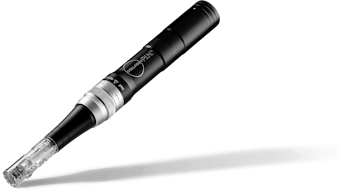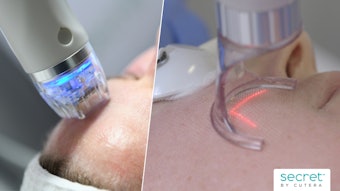
Demand for male chest definition surgery and patients complaints of breast tissue overgrowth has increased in recent decades. Alfredo E. Hoyos, MD, Colombian plastic surgeon, has worked on developing a more aesthetic approach to gynecomastia surgery over the past decade.
Recently, he and his colleagues presented their experiences performing pectoral high-definition liposculpture in addition to inverted-omega incision resection for gynecomastia. Their findings were published in the Journal of Plastic and Reconstructive Surgery (May 2021).
The authors reviewed their records on pectoral high-definition lipo sculpture between January 2005 and October 2019 in four surgical centers in Colombia. Criteria for inclusion included: men diagnosed with gynecomastia with a body mass index less than or equal to 32 kg/m2 , adequate skin elasticity and general good health. Photographs were taken preoperatively and one, three, six and 12 months postoperatively. The follow-ups for these patients ranged from two months to three years.
Related: How to Reduce Risks and Achieve Optimal Liposuction Outcomes
The retrospective chart review included 436 men, aged 18-66, who successfully received high-definition liposculpture for gynecomastia (open inverted-omega incision resection, n=132; liposuction, n=304). Treatment was targeted to the specific causes of breast tissue enlargement as well as the men's body type.
Fat grafting volume ranged from 50 to 300 cc in each pectoral muscle. Minor complications (3.2%) included prolonged swelling, bruising, assymetries and residual gynecomastia. Major complications (1.6%) included unilateral hematoma and localized infection. There were no reports of necrosis, systemic infection or muscle paralysis. Key steps in Dr. Hoyos' approach included:
- High or "dynamic" liposculpture
- Gynecomastia resection
- Fat grafting
The authors concluded that gynecomastia treatment combining high-definition liposculpture and male breast tissue resection through an almost invisible incision allowed for an athletic and natural appearance of the male pectoral area with a low rate of complications.
In a follow-up survey, 76% of men recorded their results as excellent and 17% recorded their results as above expectaions. The researchers emphasized the need for more studies to assess the long-term results, including the survival of fat grafts.
"Gynecomastia resection through inverted omega-shaped incision and dynamic definition liposculpture are safe and reproducible techniques for the management of male patients with chest contour defects," Dr. Hoyos and coauthors wrote. "Multilayer fat grafting and high-definition liposculpture are fundamental to ensure a natural athletic appearance."











